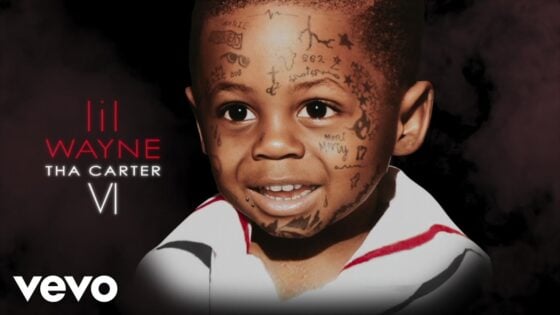Film
Fast X Finally Reaches the Franchise’s Breaking Point
The Fast and the Furious franchise begins to finally wind down as new characters test Dom’s ability to keep his family alive.
Fast X Review
In many ways, Fast Five was the turning point of the Fast and Furious franchise. It iterated upon the previous films in the franchise, but it ended with what might be the series’ best set piece: a vault dragged through the streets of Rio de Janeiro by two cars, defying physics and reality, and what could have been the series’ moment of jumping the shark. However, one spin-off and five movies later, even thinking about the notion of this franchise “jumping the shark” seems so blasé. Fast Five’s final set piece was a warning shot, but the franchise took itself to new heights (quite literally), and Fast X feels like the franchise finally accepting that it has taken things far enough.
Scribbled in the margins of every screenplay in the series so far, already littered with the word “family” or “faith,” are more instances of the word “family.” Could this person have a sibling? Just because this person killed this person, can they still be family? Is blood all that matters to call someone family? Director Louis Leterrier’s foray into the franchise with Fast X represents the choking point of that, as new characters are introduced, and Dominic Toretto’s (Vin Diesel) family might be too big to save everyone.
At least, that’s what Dante Reyes (Jason Momoa) is counting on. Fast Five isn’t just the turning point of the franchise; it’s now become the origin of its greatest villain yet. After his father, Hernan Reyes (Joaquim de Almeida), is killed and his money burned by Dominic Toretto and his crew after the vault heist in Brazil, Dante spends a decade planning the ultimate act of vengeance against a man who values family over himself. It’s a decently handled enough retcon, though pales compared to the multi-movie retcon of The Fast and the Furious: Tokyo Drift.

Luring part of Dom’s crew to Rome, Fast X finally shifts into gear when Dante begins playing with Dom and his crew – pretty much all of which return here – and starts targeting the family one by one. The Rome sequence is the highlight of the film for multiple reasons. First, it’s got a lot of the improvised action that the crew has always utilized effectively. Every plan that falls apart, whether by dumb luck or by design, is replaced by a plan B. It’s the Fast and Furious way, and it’s one of the few times it feels understood in Fast X.
The second, and perhaps the most vital reason that the Rome sequence works as well as it does, is Jason Momoa. Embodying a character who has nothing left to live for and loves that about himself, Momoa is the most charismatic performance in the film. Dancing his way through scenes, providing comedy through anarchy, Momoa wears the spoiled-son-turned-vengeful character with more panache than any villain in the past. It’s the jolt the franchise needed as it continues to drone on and on about how much family and faith matter. It was understood many movies ago, and Dante is the necessary shock to the system that characters like Brixton from Fast & Furious Presents: Hobbs & Shaw or Cipher (Charlize Theron, who again returns) were supposed to represent. His singular purpose is to burn Dom’s world down.
As more characters get added to the roster, like Mr. Nobody’s daughter, Tess (Brie Larson), or new government hotshot, Aimes (Alan Ritchson), so too does the number of targets for Dante. It also means too many characters to keep track of, especially when they keep getting separated from each other. This leads to one of the most glaring problems in Fast X and something that many franchises winding down have struggled with: balancing pacing with clarity. The final seasons of Game of Thrones started speeding their way from destination to destination, removing the breathability and character work in exchange for the meat and potatoes of the plot. Fast X is no different, as it can’t sit still long enough to make new characters matter or forge relationships that require time before they can truly manifest. It also literally can’t sit still as location names are plastered on the screen before the point of the scene is even digested.

This, unfortunately, mires the action sequences as well. The most notable sequences are Rome and the final setpiece (though even the latter is sprinkled with familiar beats from previous films in the series) because they are given time to breathe. There are so many moving parts in a good Fast and Furious setpiece, so it’s unfortunate that Fast X goes for quantity over quality for its action scenes. There is more action in this film, and even though it seems slightly settled down in Brazil at a certain point, it also has so many characters all over the world that it can’t stay centered on one character for too long. The actual action itself is solid, but without the team dynamics, or the chaotic energy of Momoa’s performance, it is often well-executed but without any excitement.
That being said, it’s important to stress how much better a scene with Dante is compared to the rest of the action. A loose cannon, his motives force Dom to not just make split-second decisions to save the day but also to save his family. A street race gone awry emphasizes Dante’s intent of creating controlled chaos: where even the right decision still has a consequence. He highlights the stakes in his every action, capitalizing on Dom’s selfless nature to push him out of safety. His prevalence throughout the film keeps it entertaining even when the scene itself may not matter.
What will undoubtedly annoy most is that Fast X doesn’t have an ending. It barely has a plot for most of the time. Dante’s plan is so singular and simple – inflict the maximum amount of suffering upon Dominic Toretto – that the film doesn’t have anything to add at a certain point. It has introduced characters that it can’t quite make matter; when it does try, it’s haphazardly. It separates characters for no point other than to separate them, ultimately leaving the potentially fun dynamic of Dante versus Dom’s crew as a hope for the sequel.
The problem is that Fast X doesn’t feel like it’s setting up anything substantial. Its threads barely matter, with the only throughline being that the only way to hurt Dom is through his family. He only cares about making sure his family is okay, no matter how extended that family may become. That Fast X pokes at that throughout makes it entertaining, even when spinning its tires. One of the only compelling elements of the screenplay (written by Dan Mazeau and Justin Lin) is a fumbled attempt to tackle sainthood and selflessness through a musclebound softie who puts his life in danger at every turn – just to keep the ones he loves safe.

Arguably, Fast X suffers most from trying to be everything at once without any weight to it all. Things have happened by the time the credits roll, but it’s multiple vignettes all essentially cutting to black before the third act can begin. Outside of Dominic, it does not ever feel like anyone else matters. Even Dominic has acknowledged that the one person who he couldn’t live without is his son. Every other character is sent off in the background, with acknowledgment from the audience only once the credits roll that we will see them again in the next film.
A few reveals at the end (including a post-credits scene that is less awesome than it thinks it is), and eventually, it becomes clear that Fast X was never a whole movie. Omitting an ending to lure audiences into theaters for the sequel is one thing, but what always worked about the Fast and Furious movies is that they could complete a narrative and then later pick it back up. Fast X picks up the Fast Five thread but decides to forgo closure, instead focusing on a character parading through the streets causing mayhem and destruction.
Fast X is an idea without direction: fun in the moment, but the lack of closure on any arc and the mishandling of other arcs serve as a reminder that the franchise was always held together by duct tape. Unfortunately, as it approaches the finish line, it finally feels like it’s falling apart.


































